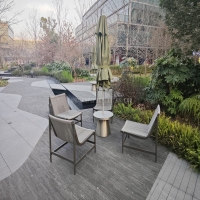Welcome to the website for landscape facilities products and knowledge.
What are the recommended methods for preventing warping in high-moisture environments?
Wood warping in high-humidity conditions presents a significant challenge for woodworkers and homeowners alike. Understanding and implementing proper prevention methods can save your projects from irreversible damage. The fundamental approach involves creating a moisture barrier through comprehensive sealing techniques. Applying multiple coats of high-quality polyurethane or marine-grade varnish forms an impermeable shield against ambient moisture. For maximum protection, ensure complete coverage of all wood surfaces, including end grains which absorb moisture most rapidly.
Material selection plays a crucial role in warping prevention. Naturally moisture-resistant woods like teak, cedar, and white oak inherently withstand humid conditions better than more porous varieties. When using susceptible woods, consider engineered alternatives such as marine-grade plywood or medium-density fiberboard, which demonstrate superior dimensional stability. For critical applications, professionally stabilized wood undergoes specialized drying processes that permanently reduce its moisture reactivity.
Environmental control represents another vital component. Maintain consistent humidity levels between 35-55% using dehumidifiers in workshops and storage areas. Implement proper air circulation with strategically placed fans to prevent moisture accumulation. In extreme conditions, installing moisture barriers in crawl spaces and basements can significantly reduce ground-level humidity affecting wood structures.
Proper construction techniques further enhance warping resistance. Always acclimate wood to its final environment for at least 72 hours before working. Design projects with adequate expansion gaps and use appropriate joinery methods that accommodate natural wood movement. For panel constructions, incorporate slotted fastener holes and floating panel designs. Regular maintenance, including periodic inspection of protective coatings and prompt resealing of worn areas, ensures long-term protection against warping.
Advanced solutions include using moisture-resistant adhesives specifically formulated for high-humidity applications and implementing waterproof membrane systems behind wooden installations in bathrooms and kitchens. For existing warped pieces, controlled rehumidification and weighting techniques can sometimes reverse minor warping when properly applied. By combining these preventive measures, you can significantly increase the longevity and appearance of wood projects in challenging moisture-rich environments.
Related search:

Recommendation
Metal structure rattan chair without armrests for single person, with woven seat and backrest.